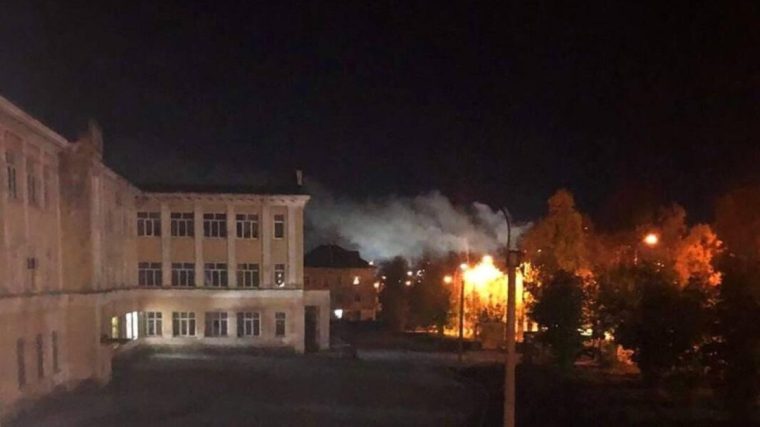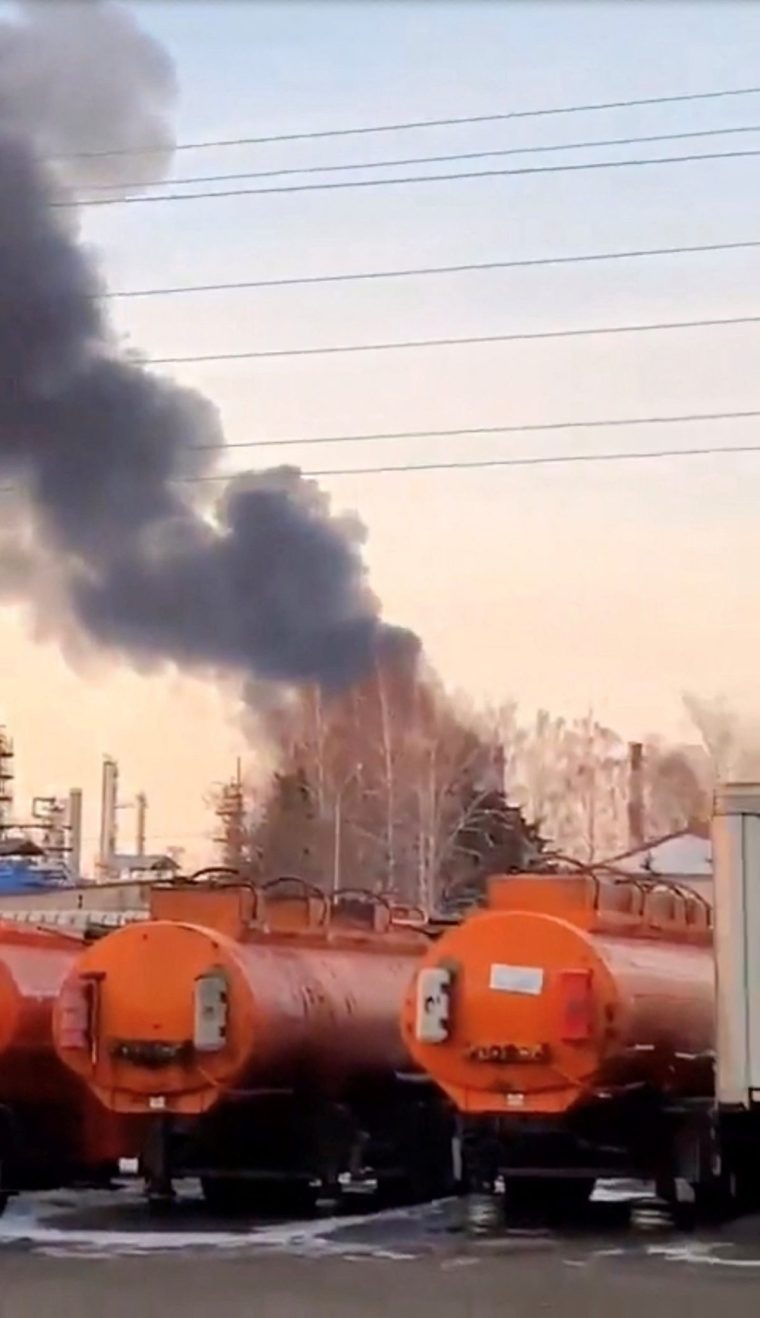Attacks are exposing Russia’s vulnerability and inability to protect its own territory
Ukraine has sparked a growing fuel crisis in Russia through escalating drone attacks on oil facilities, some more than 1,000km from the border, experts have said.
Intensified refinery attacks in the past few months have provoked soaring prices and fuel shortages in some parts of Russia, with reports of queues at gas stations and rationing.
The sustained strikes – aimed at crippling the Kremlin’s war machine and exploiting deepening vulnerabilities in the Russian economy – are undermining the Kremlin’s narrative of a robust economy, analysts say.
Since August, at least 16 of Russia’s 38 refineries have been struck, some multiple times. According to research group Energy Aspects, the attacks have disrupted more than 1m barrels of Russia’s refining capacity, and triggered a 40 per cent spike in wholesale gas prices since January.
Overnight on Friday, Ukrainian drones attacked the major Russian oil refinery of Orsknefteorgsintez in the Orenburg region, according to independent media. The refinery is about 1,400km from the Ukrainian border.
Moscow has responded by extending a ban on gasoline exports and imposing a partial ban on diesel exports in order to protect domestic supplies. Oil tracker data shows that diesel and gasoline exports have fallen some 30 per cent, pushing diesel exports to their lowest levels since 2020.
The campaign marks a sharp escalation in Ukraine’s strategy to strike beyond the front lines and hit the economic lifelines that sustain Russia’s invasion.
“Oil and gas revenues are the primary source of funding for Russia’s war effort. By targeting refineries and export terminals, Ukraine is directly attacking this financial lifeline,” Jaroslava Barbieri, research fellow at the Chatham House think-tank’s Ukraine Forum told The i Paper.
Dampened exports will exacerbate the economic difficulties already posed by lower overall global crude prices.

While drone strikes may not force refineries to cease operations in their entirety, and some have been brought back online relatively quickly, “if Ukraine hits the same refinery again and again the potential for longer-term problems rises”, John Gawthorp, a Russia and CIS analyst at commodity reporter Argus, said.
At least 10 oil refineries have been forced to fully or partially suspend operations since August, with Reuters reporting that on certain days national production dropped by a fifth.
“Since the start of August they’ve hit more refineries, and more refineries multiple times than they did in the previous two campaigns,” Gawthorp added. “If Ukraine can maintain that pace, there’s the potential to cause quite significant long-lasting degradation of Russian refining capacity.”
Ukrainian President Volodymyr Zelensky has previously hailed the success of the oil strikes, saying in an evening address in September that “the most effective sanctions – the ones that work the fastest – are the fires at Russia’s oil refineries, its terminals, oil depots”.
“For the Ukrainians, it’s a low-cost way of striking back,” Gawthrop said. While refineries across Russia have been targeted, several in the south have been repeatedly hit. “These are plants, in terms of their relative proximity to Ukraine, that are probably involved in suppling the military.”

Severe fuel shortages and rocketing prices have rippled across parts of Russia, particularly in the Far East and occupied Crimea, where rationing has been introduced at some gas stations and others have suspended operations.
The shortages are currently localised to specific regions, with central Russia and big cities like Moscow and St Petersburg unaffected.
But he adds the strikes are likely about more than simply damaging military capabilities. “There is a desire to bring the war home to the Russian population. A lot of people in Russia have been able to – over the last three years – kind of pretend the war’s not happening, but even if you’re not directly affected by gasoline shortages, reading about them is certainly a reminder of what’s going on.”
Zelensky told reporters in September that Kyiv was accelerating long-range drone production alongside energy infrastructure strikes in a bid to hit Russia where it hurts and bring Putin to the negotiating table. “Once the number of drones matches the Russians’, they will feel the fuel shortage and loss,” he said.
The strikes “help expose Russia’s vulnerability and its inability to protect its own territory while undermining the Kremlin’s narrative of a robust, sanctions-proof economy,” Barbieri said.
“Ultimately, these attacks help erode the silent contract of political apathy for economic security on which the whole legitimacy of the Kremlin has relied for the last 25 years.”
In terms of the impact to Moscow’s military capabilities, a reduction in the supply of diesel will limit the manoeuvres of armoured vehicles and logistical trucks, Barbieri said.
“Fuel shortages disrupt Russia’s ability to move reinforcements, ammunition and food supplies to the front line. Additionally, to protect valuable oil infrastructure, Russia is forced to divert air defence systems away from frontline positions, leaving its military assets more vulnerable to Ukrainian attacks.
“By systematically striking oil refineries, Ukraine is trying to trigger a logistical breakdown that undermines Russia’s ability to wage a war of manoeuvre across the 1,200km frontline.
“Ultimately, Ukraine’s strategy aims to convert economic damage into military and political vulnerability for the Kremlin.”
However, Dr Adnan Vatansever, a reader in Russian Political Economy at King’s College London, warned that Russia’s economy was unlikely to be severely impacted by the drone attacks.
“Tariffs can have a much bigger impact to oil prices… the damage it can do to the economy is a lot more than the drones are doing. They don’t have an impact on the price of oil. The damage is mainly domestic, it causes the price of oil to go up,” he said.
He said that if refineries in locations near Baltic Sea – which can easily produce oil for exports – continued to be relentlessly attacked by Ukraine and were forced to close, Russia might have to rely on small refineries in isolated locations.
Dr Vatansever said: “If you do more damage in other refineries which are built more for exports, it could damage the economy to some extent. It may not damage it so it goes over the cliff.
If this happened, he expected that Russia’s government would have to hand the small refineries more subsidies to help them cover running costs. “If they rely on badly located refineries like ones is west and east Siberia – that may mean subsidies may go up in time as they have added costs like transporting oil by rail cart to the Black Sea,” he said.
